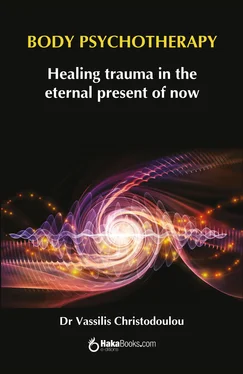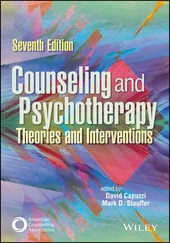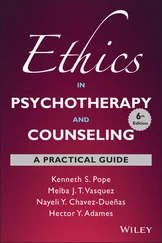| THE SEVEN MAIN ENERGY CENTRES AND THEIR GROUNDINGIn human beings there are seven main energy centres, each of which needs to be very well grounded.The first energy centre, the base centre, is connected with everything that relates to our family, our roots, our work, our home and the ground we occupy to declare our existence in the world. A well-grounded individual not only has good physical contact with their feet and the ground but also embodies the meaning of the phrase ‘he stands firmly on his own two feet’. Although it is important for this first centre to be grounded, it is in fact necessary for all of an individual’s energy centres to be well grounded if that individual is to have a healthy body, personality and spirit.The second energy centre, the belly centre, is connected with our sexuality and brings us physically close to other people. A well-grounded hara (the Hindi term for belly centre) can be interpreted as a good connection, not only with our own body but also the body of another person. In a way, it has to do with our sexual behaviour.The third type of grounding is connected with the solar plexus, which lies beneath the chest, at the diaphragm, and relates to social grounding.The fourth type of grounding concerns the way in which the heart is grounded, the way in which we live our relationships with those closest to us.The fifth centre is the energy centre of the neck and here the grounding relates to speech and experience. Do we say what we do and do what we say? Or are our words simply empty or ‘winged’ words?The sixth energy centre is that which lies in the forehead, between and a little above the eyebrows. |
| This is the centre of intuition, the grounded imagination, dreams and symbolism. Here, from an external grounding we come to an internal grounding. Images, dreams, the imagination and symbolism are all internally grounded; they have experience beneath them which gives them substance; they have truth; they are either well integrated or rest on an existential void and thin air.The seventh and last of the main energy centres is located at the top of the body, in the centre of the head. It is the ground of our personal identity, our being in this world, and includes our spiritual identity. |
In body psychotherapy when we want to work on the ego, we work on the spinal column: when we work on the spinal column, the ego is strengthened. When we examine the rear part of the body – the back and the spinal column – we look to see how rigid it is, and at the same time we take note of the condition of the front part of the body, which is directly connected with the individual’s emotional life. The rigidity of the spinal column reveals the patient’s inability to let themselves express their emotions. On the other hand, a collapsing spinal column reveals a tendency to cede control, to fall easily and to yield to one’s emotions. An individual whose spinal column is in such a state is governed by the childlike part of themselves and is afraid to assume the responsibilities expected of them.
The characterological tendency displayed by my young male patient C. D. was the tendency towards control, despite the fact that there was also a clear tendency to let himself collapse – a tendency to collapse, to seek support and yield to his emotions, to feel the joy of a child. These two tendencies, as Boadella has shown, are to be found in everyone and are always poles apart. This polarity presents itself as a kind of layering… The visible exterior is a poor concealment of the truth, the other pole, which is present in disguise; it can reveal, therefore, what lies underneath. Our character-structure, the defence we have built up in the particular form in which it appears in our body, reveals our real needs. The more strongly we refuse something, the more desperately we crave it. We refuse it on one level and plead for it on another. Thus, C. D. gave the appearance of being both physically and socially strong. In social terms, he appeared to be a very generous, giving person. Instead of taking from others, he would give unstintingly, thus concealing his real need, which was to take, to receive acceptance and love at any cost and, in bodily terms, to fall back on the support of others.
A little later, in the same therapy session with C. D., when he came to feel that I was really there for him, he connected with a former girlfriend of his:
I can see her face, yes, I can see her before me, larger than life. She tells me that she’s pregnant. The news makes my blood run cold. I’m in a fix… I want her but my parents don’t approve of her. And I want their approval. I love being with her, now she’s pregnant and I’m in a fix…
His body, from the waist upwards and particularly his back, was completely rigid. His legs, from the pelvis down, were ‘jigging about’ like those of a wooden puppet whose strings are being pulled quickly to and fro. I asked him to examine his feelings and he realised that he was feeling angry.
I feel angry, very angry because… why should they do this to me?
I asked him if he could identify who he was angry with and he replied immediately: With her, I’m angry with her; how could she do such a thing to me…?
Now he was like a car with its engine fully revved up but the brake pressed firmly down. He was almost hopping about on the spot. He knew what he wanted to do and, when I asked him what this was, he replied unequivocally:
I want to hit her… I want to hit her…
He did not lash out until I gave him the go-ahead to do so. The energy was there, ready to be released, but not in an uncontrolled manner…
I led him to a mattress with a pile of cushions. He knelt down and began hitting a large cushion and, to make it easier for him, I picked it up and held it in front of my chest. He kicked the mattress again and again and then, after the initial release of anger, he realised how he really felt: he realised that he was afraid. He was afraid of facing up to the situation, yet at the same time he could sense something new. He himself would like to keep the child. But his parents didn’t approve of the girl. So it couldn’t happen. The question of the child brought him face to face with his fear of being dependent: he would lose control. It was part of his character-structure, part of his neurosis.
Neurotic individuals fear dependence, just as they fear independence, depending on what pole they are at: if they are too grounded, they fear dependence; they have, we might say, a pathological obsession with independence. On the other hand, when the individual is relatively ungrounded, they display a fear of independence and an obsession with dependence. The ability to move between the two poles, depending on the circumstances, and to have practical experience of interdependence, is a sign of mental health. (With regard to interdependence, Western-type societies have a very negative effect on people’s mental health by placing a sick or pathological emphasis on the independence and self-sufficiency of the individual. In this way they create the illusion that man is an autonomous and self-sufficient being that can live independently of other ‘individuals’.)
The functional dependence of psychotherapy
In psychotherapy we create a form of functional dependence that enables the patient to receive, through our therapeutic relationship with them, whatever they were not given during their personal development, so that they can acquire a healthy interdependence. The aim is to empower them to know when to take the initiative and lead the way and when to follow others, without feeling inferior. In body psychotherapy when we speak of dependence, independence and interdependence, these are not merely mental constructs or concepts that we assimilate mentally. They are bodily processes, they are recorded in human beings purely on a cellular level and become evident in a patient’s muscle tone.
Читать дальше












